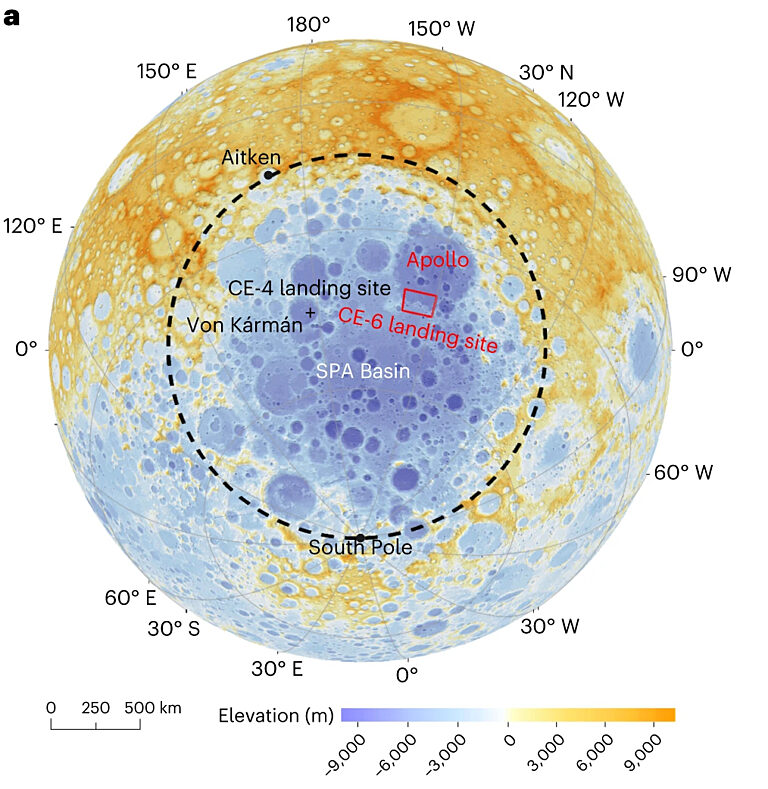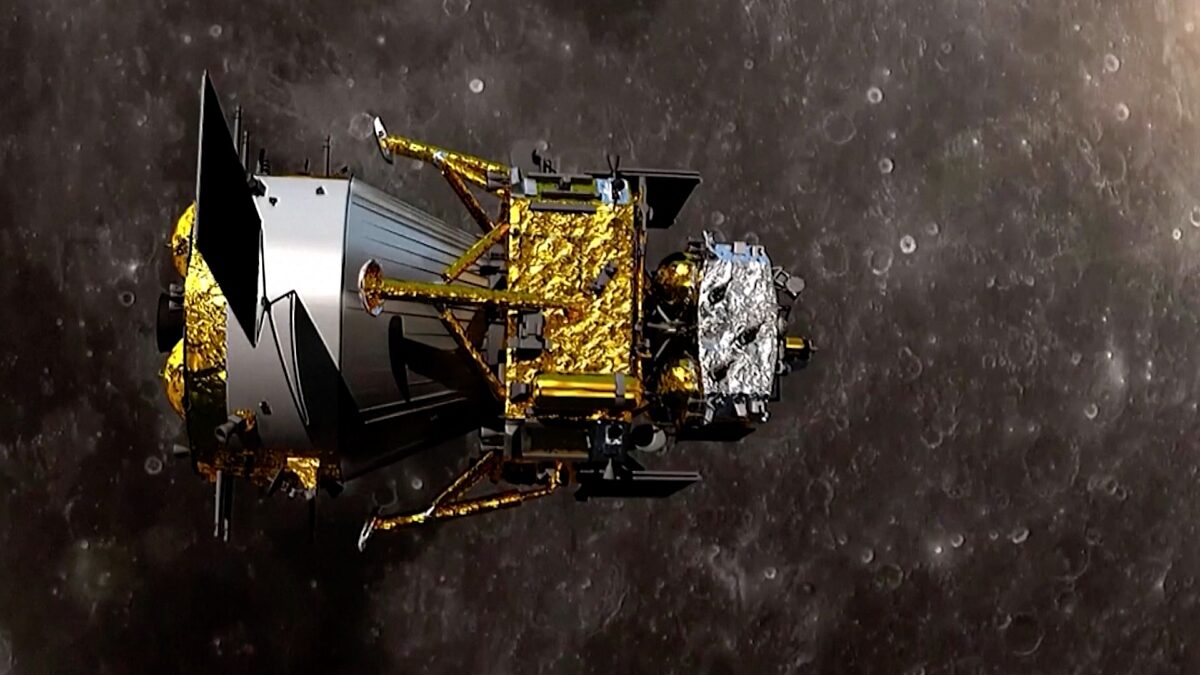Jason Davis • Apr 29, 2024
Chang’e-6 launch: What to expect
China is preparing to launch a historic mission to return the first samples from the far side of the Moon.
Chang’e-6 (嫦娥六号) is set to blast off on May 3 aboard a Long March 5 rocket from the Wenchang Satellite Launch Center on Hainan Island. The spacecraft will embark on a 53-day journey to the far side of the Moon and back, returning lunar soil and rocks to Earth that will help us understand the Moon’s history.
The mission will target the Moon’s South Pole-Aitken (SPA) basin, where an ancient impact may have blasted part of the Moon’s mantle up to the surface. The region has long been thought of as a keystone to understanding how and when massive objects pelted the Moon and Earth billions of years ago, and why the far side of the Moon is so different from the near side.
Many missions have returned samples of the Moon to Earth over the years, most recently Chang’e-5 in 2020. But all have been from the near side, where line-of-sight communications with Earth simplify operations. Landing on the far side requires a communications relay satellite, of which China now has two. The country made the first successful lunar far-side landing in 2019 with Chang’e-4, and will follow that achievement with a sample return.
The mission
The Chang’e-6 spacecraft consists of four separate components: an orbiter, lander, ascender, and reentry module. After launch, Chang’e-6 will travel to the Moon and enter lunar orbit. The spacecraft’s lander and ascender will travel to the surface, while the orbiter and reentry module stay in orbit.
The lander and ascender will touch down in the southern part of Apollo crater, within the SPA basin. They will collect 2 kilograms (4.4 pounds) of lunar material using a drill and scoop. The ascender will then blast back into lunar orbit and transfer the samples to the reentry module. The orbiter will carry the service module back to Earth and release it into the atmosphere, where it will parachute to a soft landing.
The entire mission is expected to last 53 days, much longer than Chang’e-5’s 23-day nearside sample return mission. While it is on the Moon’s far side, Chang’e-6 will communicate with Earth through the Queqiao-2 relay satellite, which launched in March 2024. Queqiao-2 is equipped with one of the largest parabolic antennas ever sent beyond Earth, with a diameter of 4.2 meters (13.8 feet).
The science
The samples Chang’e-6 returns to Earth will provide new insights into a messy period of Solar System history.
Most of the Moon’s impact basins formed about 3.9 billion years ago when large objects smashed into the Moon during an event known as the Late Heavy Bombardment, or lunar cataclysm.
What caused such a large number of impacts to occur at roughly the same time? There are two main theories. The first is that the orbits of the giant planets shifted, flinging leftover planet-forming materials toward the inner planets, producing a spike in impacts.
The second theory is that the Late Heavy Bombardment was not a spike at all. Instead, it may represent the end of a longer period of gradually declining impacts.
We can test these theories with samples from the SPA basin, which dominates the far side of the Moon. The basin is about 4.26 billion years old, predating the near-side impact basins.
Was the SPA formed as part of the Late Heavy Bombardment? Or was it a separate event? By obtaining precise dates for the basin and the craters overlying it, we will be able to better understand the Moon’s history.
This also has implications for understanding the origins of life on Earth. It’s possible that asteroids carried water and organic materials to Earth during the Late Heavy Bombardment. Understanding the timing and circumstances of this event is critical for unpacking our origin story.

Instruments
Beyond the tools that will help it collect samples for return to Earth, Chang’e-6 will carry two international payloads to study the way the lunar surface interacts with its tenuous atmosphere.
The French-provided Detection of Outgassing RadoN (DORN) instrument will watch for radon outgassing from the Moon’s crust, while Sweden’s Negative Ions at the Lunar Surface (NILS) experiment will detect negative ions emitted from the lunar surface as a result of the solar wind.
Chang’e-6 will also carry Italy’s INstrument for landing-Roving laser Retroreflector Investigations (INRRI). The retroreflector will be used to precisely measure distances from orbit.
Finally, a student-built Pakistani CubeSat named ICUBE-Q will separate from Chang’e-6 into lunar orbit and take images of the orbiter, the Moon, and the Earth. It will also measure the Moon’s magnetic field.
Long-term ambitions
Chang’e-6 is just one part of China’s comprehensive plan for the Moon, which includes landing humans on the surface by 2030. The country is also planning the International Lunar Research Base (ILRS), which can be seen as a competitor to NASA’s Artemis program.
Following Chang’e-6, China plans to send Chang’e-7 to Shackleton Crater at the lunar south pole. Shackleton is also a candidate site for Artemis III, NASA’s first crewed moon landing since 1972. Chang’e-7 would include a rover and a small flying probe.
Chang’e-8 would also target the south pole and experiment with in-situ resource utilization. The mission would melt lunar soil to produce bricks that robots could use to assemble structures. Another experiment would test the viability of using plants and microbes for life support.
The Time is Now.
As a Planetary Defender, you’re part of our mission to decrease the risk of Earth being hit by an asteroid or comet.
Donate Today

 Explore Worlds
Explore Worlds Find Life
Find Life Defend Earth
Defend Earth


